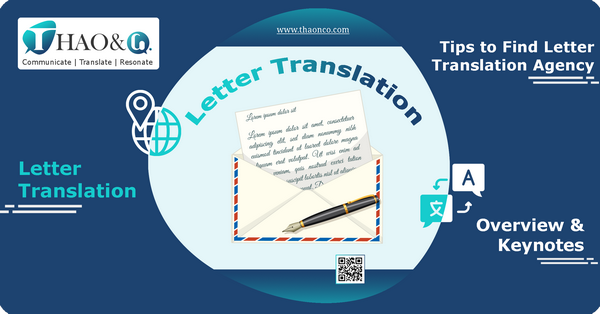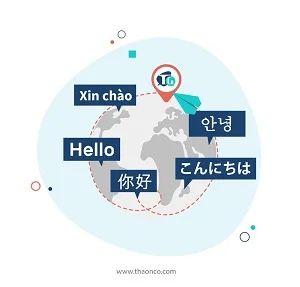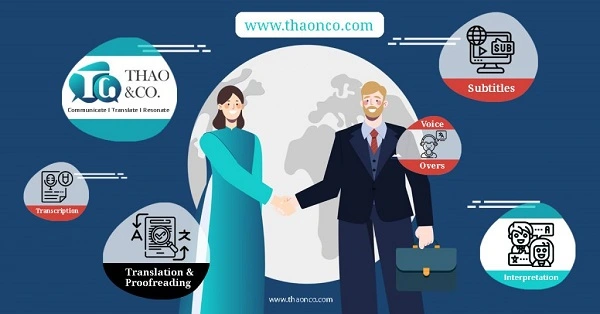In today’s interconnected world, letters are pivotal in exchanging information across borders. But can this connection truly thrive without effective letter translation?
What is letter translation? Have you heard about this translation approach? Join Thao & Co. to familiarize yourself with everything you need to know about letter translation!
A letter serves as a means of conveying information from the sender to the receiver. While the primary mode of expression in a letter is through language, it can also incorporate symbols, images, and enclosures to convey its message. Since its inception, letters have been used as a means of communication and information sharing and a way to express one’s deepest feelings. Letters are more than just words; they carry with them the sentiments of the sender, delivered to the recipient with utmost sincerity.
Letter translation entails converting the language of a letter from the target to the source language. This process is beyond mere language conversion, involving the intricate task of meticulously recreating context, culture, and style to ensure that the translation captures the essence of the original letter, including its information, emotions, and aesthetic qualities. A successful letter translation should make readers feel as if it was originally written in the target language, without any trace of translation
Letter translation is essential for both individuals and businesses. Here are some typical contexts where letter translation services play a pivotal role:

In these diverse contexts, letter translation is the optimal solution, facilitating effective cross-cultural communication with clarity and accuracy. This practice also serves as a preventive measure against potential incidents arising from any confusion or misunderstanding within the letter.
The demand for letter translation extends to various correspondence types, depending on specific needs. Letters can generally be classified based on their content, including love letters, invitation letters, apology letters, greeting letters, thank-you letters, open letters, request letters, complaint letters, and more. Each letter serves as a conduit for the sender’s intended message to reach the recipient.
Furthermore, to facilitate the process of letter translation, letters are commonly classified into two main categories: informal and formal.
By categorizing letters into two distinct groups of informal and formal letters, you may ensure that your correspondence is appropriately translated and meticulously adapted to the particular attributes of each type. As such, the new translation can uphold the original letter’s intended purpose and “mission” with this strategy.
Letters serve as a valuable means of fostering stronger connections since they encapsulate a wide range of emotions, sentiments, and vital information from the sender to the recipient. Formal letters, in particular, adhere to standardized formats following established letter-writing conventions. As a result, it is imperative for letter translators to meticulously consider the following pivotal elements throughout the translation process to deliver the utmost quality translations tailored to your needs.
Language is a reflection of culture. Therefore, letters always reflect the unique cultural characteristics of the writer, evident through expressions like colloquialisms, regional vocabulary, wordplay, and more. To ensure that a translation fully conveys cultural characteristics without confusing readers, translators must select linguistic expressions aligned with the reader’s cultural context.
The closing of formal letters in American and British English exhibits notable distinctions even though both nations share the English language. Americans commonly conclude their letters with “Yours sincerely” or simply “Sincerely,” while the British reserve these phrases for highly formal correspondence that begins with the recipient’s title, such as “Dear Mr. Smith” or “Dear Professor Smith.” As such, letter translators must possess a profound understanding of the cultural intricacies inherent in the source and target languages to produce translations that guarantee professionalism and excellence.
Letters serve as a channel for communication among individuals, and as such, they may occasionally contain sensitive or highly confidential content. When it comes to translating such correspondence, ensuring the confidentiality of customer information takes on paramount importance. It is imperative to select translation services that prioritize robust security measures for customer data, including encryption for storing project files and the adoption of secure information-sharing methodologies.
Linguist Dell Hymes emphasized, “the key to understanding language in context is to start not with language but with context.” Indeed, “context” is paramount for translators seeking to craft successful letter translations. The intricacies of relationships, specific circumstances, and the underlying purpose behind the letter provide clarity to the context of its content. By grasping the letter’s context, translators can skillfully “decode” the original text and adeptly “encode” it into a well-crafted translation.

In contrast to ordinary communication, a letter’s style often conveys a sense of luxury, elegance, and politeness. This formality is most noticeable in formal business correspondence, which adheres to established standards for each letter segment. Preserving this formality style in translation becomes imperative to maintain the original letter’s professionalism. Thus, the translator must meticulously select appropriate language throughout the translation process to ensure the resulting translation maintains a formal style consistent with the source material.
Writing a letter is a truly exquisite and profoundly meaningful endeavor, as this is when a writer is brimming with emotions, carefully selecting words to convey their thoughts and feelings. Be it an invitation, an expression of gratitude, or a heartfelt apology, letters have consistently served as a sacred conduit for individuals to convey their most profound emotions to one another. Consequently, the feelings and sentiments within these letters are invariably rich and profound.
Therefore, this endeavor can also pose a challenge, as it demands of translators not only comprehension but also an immersion in these emotions. This is essential to faithfully convey the profound emotional essence of the original text
In certain instances, such as invitations and congratulatory letters, the visual elegance of a letter manifests the sender’s sincerity and personal style. It serves as an effective means to make a lasting impression and convey profound respect for the letter’s recipient. At this point, the role of letter translation extends beyond primary information transfer to include the critical obligation of conserving and expressing the aesthetics within the original language.
To preserve the original work’s artistic essence, many translation agencies now offer Desktop Publishing (DTP) Services, which facilitate the reproduction of translations with a visually appealing and standardized design reminiscent of the original, helping to save clients’ time and effort.
The translation rates for letters are influenced by various factors and may vary between different translation agencies. Our letter translation pricing at Thao & Co. is based on four major factors:
Thao & Co. professional translation agency will provide a detailed quote before we commence your project. Our commitment to transparent pricing ensures absolute clarity in our translation rates, instilling confidence in the quality of our services.
When seeking high-quality letter translations, it’s essential to collaborate with a reputable and established translation agency. However, how can you find the best letter translation service provider among the numerous options available today?
To determine the suitability of a translation agency for your project, consider factors such as pricing, reputation, workflow efficiency, translator expertise, confidentiality measures, and their track record of successfully completed projects in your target language pair.

Drawing from extensive experience and a track record of successful letter translation projects, Thao & Co. proudly offers high-quality General Translation Services delivered by proficient native linguists. Our commitment extends to providing transparency and competitive pricing throughout an optimized workflow.
Notably, our translators at Thao & Co. sign non-disclosure agreements (NDAs) before initiating any translation projects, guaranteeing the highest level of data confidentiality for our valued clients. We’re dedicated to consistently delivering excellence in our translation services to meet and exceed your expectations.
Please visit Thaonco.com for more information, or head over to our Get A Quote page to discuss your translation needs today!